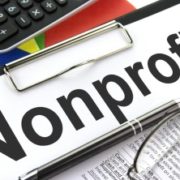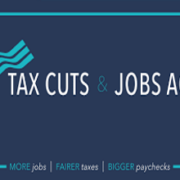Paying Yourself When Starting a Business
Determining how to pull money from your business is a critical step in small business ownership. Whether you take a draw or a salary, makes little difference if you are a sole proprietor. A combination of salary and draw is typically how most small businesses start. When the business is doing well, the draw can be easy to utilize, but remember that the business will need cash flow when times are leaner, so overdrawing on the business can cause issues down the road. That’s where a controlled salary can help keep cash in the business and make it less tempting to take more cash out of the business than you really need. The owner’s draw is also taxable on the owner’s personal tax return and owners must make estimated tax payments and self-employment taxes on any draws.
Your business type is critical.
If you are a sole proprietorship, you can take whatever amount you’d like for compensation, if the business has any money. If however, you use any other business type, the issue of compensation becomes much more complicated. If you have an S-corporation or a C-corporation, there are IRS rules regarding compensation and stock options that you need to be aware of and know the ins and outs of using. This is a great time to talk with a tax accountant about the differences and how to stay in compliance with all of the rules surrounding executive compensation limits.
To fully understand the salary versus draw decision, you must understand owner’s equity. When starting a business, the business owner contributes cash, equipment and other assets into the business. Asset contributions elicit owner’s equity in the business. Accountants define equity in a simple formula:
Assets – liabilities = equity
Assets used in business include cash, equipment and inventory. Liabilities are the monies the business owes and includes bills that must be paid each month. If a business was to convert all of the company’s assets into cash and then used that cash to pay off any liabilities, any remaining dollars are considered the business’ equity. Calculating the business’ equity is a good way to determine the actual value of the business and then make a decision regarding taking a draw.
One-Third Rule
In order for your business to thrive, it’s important to remember that taking all of the profits out of the business in the form of a salary or a draw, will leave nothing for future growth or leaner times. With that in mind, consider the one-third rule. Take one-third of the business’ gross income and place it in a money market or business account. Take the second third of the income and use it to pay business expenses. The final third can be used to take personally or put back into the business for additional capital expenditures or growth. This model won’t work for every business type, as businesses with greater capital outlay such as retail businesses have a much tighter margin than service related companies with smaller expenses.
Set your budgets – even in the beginning.
Get what you need to keep yourself and your family afloat. One of the leading causes of divorce is financial hardship. Bear that in mind when you go to your spouse and ask to strap the family for not just a short while, but for what could realistically turn into years. Also consider that if you carry the health insurance benefits through your salaried position now that either your spouse will need to pick up coverage, or you will have to seek other options. Sole proprietors, members of LLCs, and partners must each pay self-employment taxes on draws and any other distributions taken from the business. S Corp shareholders do no pay self-employment taxes on distributions, but each owner who works as an employee of the company must be paid a ‘reasonable compensation’ before profits are paid. Those employees will then pay taxes on the monies paid
Taxes, Man, Taxes.
Remember that no matter what kind of business entity you decide to create, Uncle Sam will always want his cut including Social Security and Medicare taxes (FICA).
Ultimately, the choice is yours, but before taking a draw or salary consider the following:
- Business funding – Does the business have enough capital to operate sufficiently before you take the draw?
- Taxes – Understanding tax liabilities, both for the business and personally is crucial to deciding whether to take a draw or a salary and through which type of business entity. There is no method that escapes the tax bill, so plan now for future draws and income.
- Plan – Talk with a business tax specialist about the best ways to handle tax payments and individual liability based on your business type.
To learn more about tax planning and your small business, talk with a Professional Small Business Advisor by clicking Find an Accountant on this page.
PASBA member accountants bring the collective resources of a nationwide network of Certified Public Accountants, Public Accountants, Enrolled Agents and other practitioners available to answer your tax and financial questions and streamline your business accounting, bookkeeping, and payroll operations.











